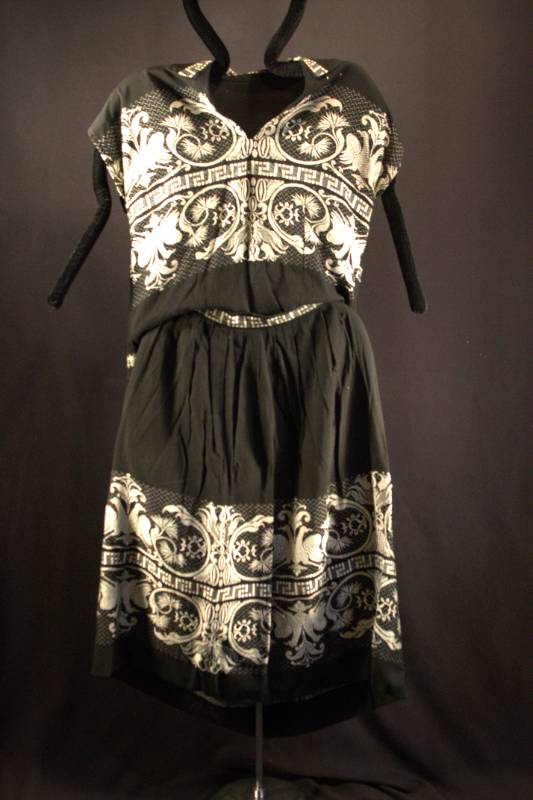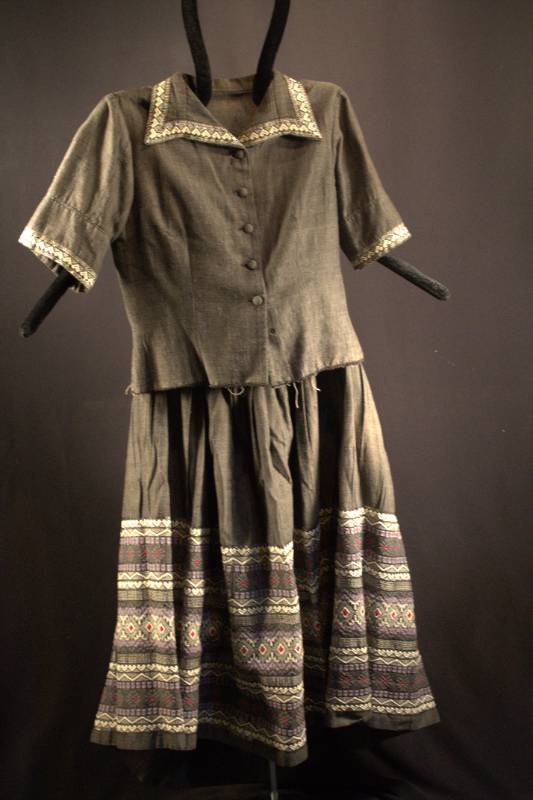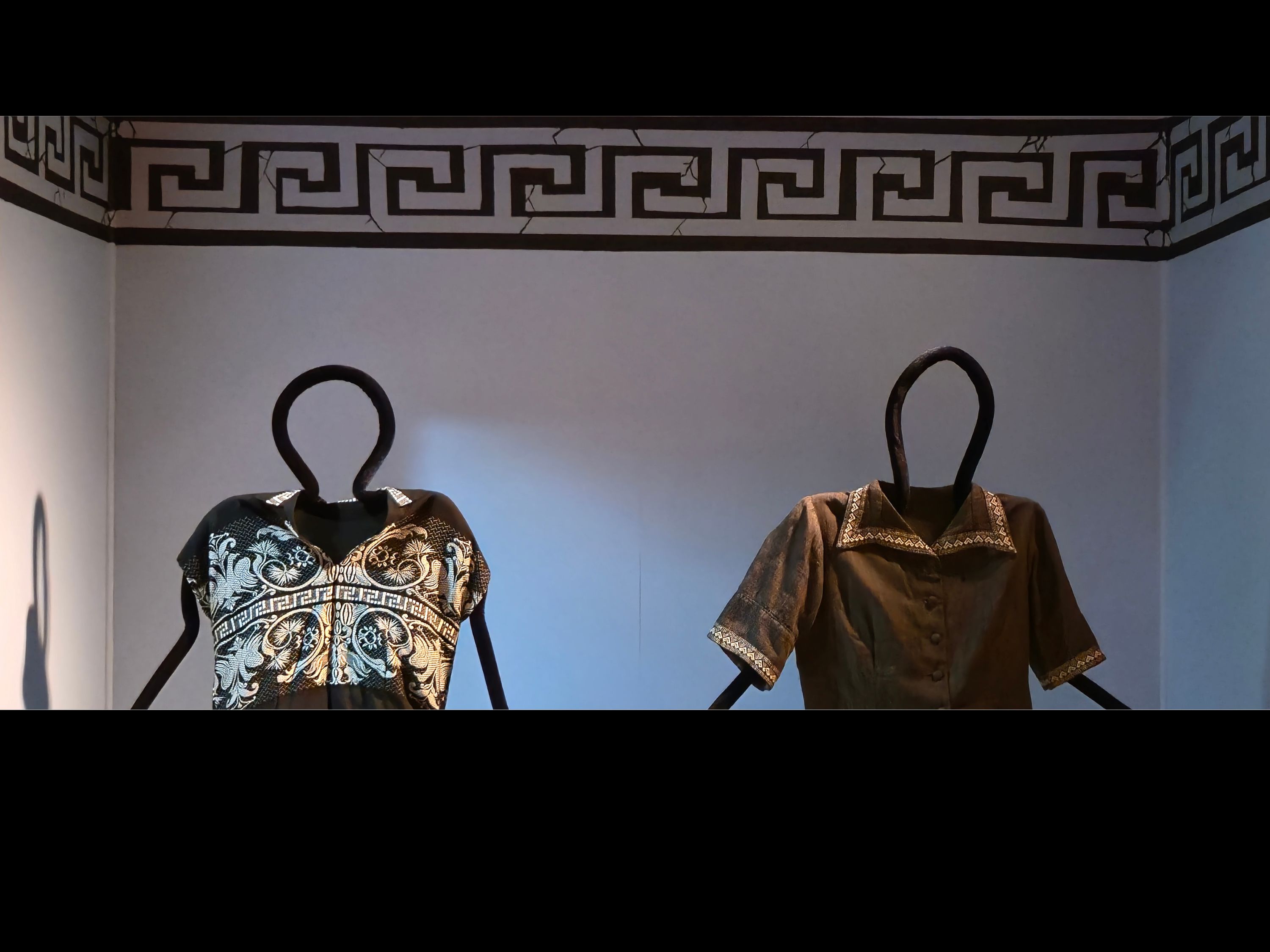Constructing Identity: Themes and Symbols Around the World
Meandering Through Fashion
Much like architecture, fashion also includes many patterns in its design. They provide evidence for cultural exchanges, as fashion choices and patterns can begin in one part of the world but later be found in another. The Greek meander pattern – also known as the Greek Key pattern – is a prime example. Starting in Ancient Greece, it has been found in many designs across the world. In fact, the English Victorians later popularized it. The meander symbolizes a river’s winding path and the continuous flow of human life.
Modern globalization and the rise of social media is making this cultural exchange even more prevalent.

Shirt and Skirt
Athens, Greece
Cotton
With its monochromatic coloration, the patterns are highlighted. The famous Greek meander pattern divides the outfit, while a brocade pattern is on either side of it. The brocade began in Ancient China, but through the Silk Road, many other cultures adopted it. This outfit then showcases Greek heritage as well as cultural exchange.
Donated by Francis Brown
1990.09.012a+b Lowell D. Holmes Museum of Anthropology

Jacket and Skirt
Athens, Greece
Cotton
Not every pattern has a natural appearance, some emphasize mathematical shapes. This outfit utilizes such geometric patterns, with a particular focus on the triangles and squares. Although, it does include a floral pattern in the skirt. Combing nature with calculated geometry showcases the complexity of human nature. The organic works alongside the inorganic, even in fashion design.
Donated by Francis Brown
1990.09.011a+b Lowell D. Holmes Museum of Anthropology


